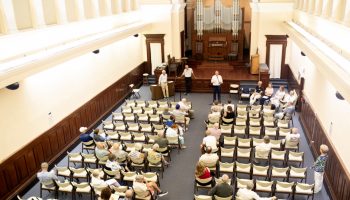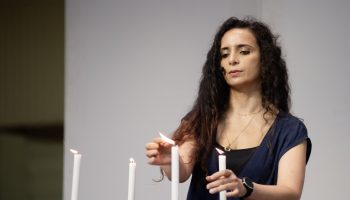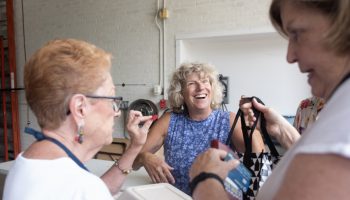
Kaitlyn Finchler
Contributing writer
At the Western New York Land Conservancy, employees are working to create the Western New York Wild Way to protect wildlife species in their natural habitats. With so many highway systems, drivers and other at-risk situations for wildlife, their protection is crucial.
Marcus Rosten, WNY Wildway Director at the Western New York Land Conservancy, will deliver his lecture, “Animal Tracking for Wildlife Corridors,” at 12:15 p.m. today in Smith Wilkes Hall for the Bird, Tree & Garden Club, in collaboration with the Chautauqua Climate Change Initiative.
“We just finished a wildlife occupancy study that is helping us better understand how bobcats, black bears and fisher are living and moving through Western New York,” Rosten said. “We are going to be sharing trail cam photos … and sharing how we are working through the Western New York Wild Way to use this data to create safer infrastructure in Western New York along our roadways.”
In partnership with the Department of Transportation, Rosten said protecting the habitats and corridors the wildlife uses is the priority. The land conservancy is a land trust, he said, so land is primarily protected through either donated land or land purchased to be protected as a nature preserve, often with public access.
The land conservancy also protects land through a legal tool called conservation easements, he said. This allows land to be privately owned, but the conservancy “acquires and extinguishes” the development rights for the property.
“For the Wild Way, we did a multiple-year planning effort to map out where we have our most climate-resilient land, where are our most connected areas and what are the paths that wildlife are taking,” Rosten said.
This mapping effort resulted in the Western New York Wild Way map, which has both core areas of wildlife habitat — the “largest, most-intact” areas, and corridors — the “easiest, most likely” path for wildlife to move.
“For animal tracking, what we used are our motion-activated cameras that we left out for an entire year as a part of a wildlife study on both protected areas of land, (and) … a subset of those cameras are placed at roadways, bridges and culverts,” Rosten said.
In utilizing the cameras, Rosten said they can retrieve “presence and absence data” where the cameras are located and can work with wildlife ecologists to look at other co-variants in the location.
“We have few direct observations of wildlife studies in Western New York,” he said. “So, in order to make the case on where we need these projects to go, or to make the case to funders and grantors, we need that data to show this is where the bobcats, black bears and fisher are moving through.”
There is currently a biodiversity crisis currently being “exacerbated” by climate change, Rosten said. Many species are experiencing population declines, trying to exist in a landscape becoming more and more fragmented, and Rosten said this will cause wildlife to move in order to stay in their ideal climate.
“The Wild Way is going to help both those species that are really experiencing declines now, but we’ll safeguard those that are stable,” he said, “and then, additionally, welcome species back into our region that have been extirpated. We’ve seen it with fisher who were regionally extinct and, through preservation and reintroduction methods, have (come back).”
If wildlife corridors can be protected, Rosten said more species can be welcomed back into the Western New York region. Even back home, everyone plays a role in the environment to ensure wildlife can live and thrive in their communities, he said.
“We can all take steps to maximize native plants on our properties, minimize invasive species,” Rosten said. “Things even as small as turning your lights off can have an effect on how wildlife will move through a property or region.”
From his talk, Rosten said he hopes the audience can get a “new lens” through which to view the landscape in which they live.
“A lot of times, I think we have a more human-centric view on how things are laid out, but when we take that wildlife view and we see how our infrastructure and our development has challenged what has been the evolutionary path that these wildlife have taken, … in a short time, we have really changed this landscape,” Rosten said.
Hoping the audience finds a newfound appreciation for “how hard it is” to be a wild animal in this day and age, Rosten said he hopes they see how wildways make the community safer.
“We made this landscape increasingly difficult for wildlife to challenge, and now we have the responsibility to step up and make it a little bit safer for them,” Rosten said.





